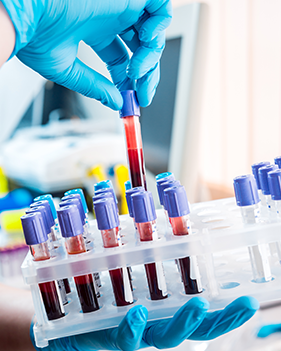Down Syndrome Screening Test
The desire of every expectant mother and father is to be able to have a healthy child. During pregnancy, whether your baby is healthy or not is evaluated by many tests. Ultrasonography and blood tests are screening tests used during pregnancy.
What does a screening test mean?
The tests applied to all individuals of the society for the recognition of a certain disease in healthy individuals are called screening tests. Thanks to these tests, it is intervened before the disease appears or at an early stage. Breast film for breast cancer, PAP smear test for cervical cancer are the main screening tests used in women's health. However, a screening test is not a diagnostic test. Additional tests are needed to confirm the diagnosis in patients whose screening test turns out to be positive or high-October. Taking a tissue sample (biopsy) from the suspicious area on the breast film or taking a biopsy from the cervix after a smear can be cited as examples. These tests are called “diagnostic” tests.
Why are diagnostic tests not performed first?
Screening tests are tests that can be applied to all individuals, are inexpensive and lead to the least discomfort in a person. Diagnostic tests, on the other hand, are expensive procedures that require private intervention, expertise and laboratory evaluation, such as taking a biopsy or amniocentesis. For example, amniocentesis (the process of taking a sample from the fluid in which the baby is located) should be performed to diagnose Down syndrome. In order for this procedure to be performed, an experienced specialist doctor, a genetic laboratory and a genetic specialist are required for ultrasonography, and chromosome analysis. There is a risk of miscarriage due to the procedure after the procedure. Due to the risks and cost, diagnostic tests are applied only to pregnant women whose test result is reported as “high risk”.
What is a chromosome?
Chromosomes are the building blocks that carry the information that makes us who we are inside our cells and pass this information from us to our children. There are 23 pairs of chromosomes in humans. One pair of these chromosomes is the sex chromosomes (XY male; XX female).
What is Down Syndrome (*)?
Down syndrome (trisomy 21) is a genetic disease caused by an excess of part or all of chromosome 21. Children with Down syndrome have mild or severe mental retardation, learning disabilities, and physical development retardation. Slanting eyes, shortness of arms and legs, and speech problems are the main physical characteristics. They are also at high risk for heart abnormalities, reflux, recurrent ear infections, sleep disorders, and thyroid diseases. There is a rate of one in 800-1000 births in society
How is Down syndrome screening performed during pregnancy?
Your pregnancy is 10-14. weeks and 16-18. biochemical screening is performed by taking the mother's blood during the week. 10-14. free beta hCG and PAPP-A at gestational weeks, 16-18. during the weeks of pregnancy, alpha-feto protein, beta-hCG and estriol levels are measured in the maternal blood. These tests are not ’intelligence tests'. As you know, intelligence tests are written and oral evaluations, not based on blood values. The definition of ’intelligence test' is used incorrectly.
First trimester screening
Obstetricians define the pregnancy process by dividing it into three (trimesters). The first 14 weeks are called the first trimester. Your pregnancy is 10-14. between weeks, your doctor will measure your baby's age, heart rate Deceleration and nasal bone with ultrasonography. At this time, it also measures the thickness of the Decumbent edema (NT), which is normally found in each baby between those weeks. The risk is estimated by the baby's age, NT measurement and blood tests (free beta hCG and PAPP-A).
Second trimester screening
During the second trimester of your pregnancy (second trimester), 16-18. it is a test performed by taking blood from the mother (alpha feto protein, beta hCG and estriol) during the weeks of pregnancy. In this test, the result will be given by calculating the risk.
What is the risk?
We talked about the logic of screening tests. So what does risk mean, high risk and low risk?
The screening test is not a diagnostic test, the aim is to apply the diagnostic test (chromosome analysis) and the intervention (amniocentesis) to the fewest possible (high-risk) people to be performed after the screening test.
The ‘high risk’ or ‘positive’ report for Down syndrome on the report papers given to you does not mean that your baby has Down syndrome. Reports given as ‘low risk’ or ‘negative’ with a similar interpretation also do not mean that your baby will not have Down syndrome. At best, with this screening logic and methods, nine out of every 10 babies with Down syndrome will be detected, but one will be born. This figure applies to all centers in the world that implement a similar screening policy.








